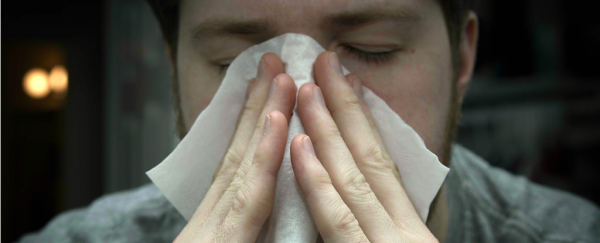Whether it's hay fever, food allergies, or asthma that plagues you, there's no denying that our immune system can be a real punishment when it's not working properly.
Which is why it's so exciting to hear that researchers might have just come up with a system that could, in theory, put an end to all allergies - simply by forcing our bodies to recognise harmless objects, such as peanuts or pollens, as friend, rather than foe.
I know what you're thinking - that sounds too good to be true, right? Because scientists have been trying to find a way to stop our immune system freaking out over harmless things, such as cat hair and pollen, for decades, and so far, nothing's really stuck.
But this new approach is different. Instead of trying to calm down the immune system, the researchers have used nanoparticles as a 'Trojan horse' to smuggle the allergens past the immune system's defences and get them officially recognised as harmless.
The research has so far only been done in mice, and there's a whole lot more validation to be done before it get anywhere near the market, so don't too excited just yet. But the same technique is already progressing to clinical trials as a treatment for autoimmune conditions, and so far, it's looking really promising.
"It's a universal treatment," said lead researcher Stephen Miller from Northwestern University in Chicago. "Depending on what allergy you want to eliminate, you can load up the nanoparticle with ragweed pollen or a peanut protein."
"The findings represent a novel, safe and effective long-term way to treat and potentially 'cure' patients with life-threatening respiratory and food allergies," he added. "This may eliminate the need for life-long use of medications to treat lung allergy."
Obviously, our immune system is incredibly important when it comes to keeping bacteria and viruses at bay. But sometimes - for reasons we still don't understand - the immune system recognises something harmless, such as eggs or dog fur, as the enemy.
This causes the immune system to build up antibodies against these allergens, leading to inflammation, snot, and all the terrible stuff those of us with allergies are familiar with. And short of exposing kids to allergens at a young age, there's not a whole lot we can do about it.
The branch of the immune system that's responsible with telling the rest of the body that something is harmless is called the 'innate immune system', but unfortunately, once an allergen has been labelled as 'bad', it never gets the chance to come in contact with this innate immune system again.
Unless, that is, you can smuggle it in somehow, which is what this team has done.
They developed dissolvable nanoparticles out of an FDA-approved polymer, and then filled them with egg protein, before injecting them into mice that were allergic to eggs.
Usually, these mice would develop an asthma-like response, but because the egg protein was safely stored inside the friend-looking nanoparticles, their bodies didn't react.
Even better, the nanoparticles were then cleaned up by macrophages, which are tasked with 'vacuuming up' any debris in the blood stream. And these macrophages are part of the innate immune system, which meant that the allergens were then processed as normal.
"The vacuum-cleaner cell presents the allergen or antigen to the immune system in a way that says, 'No worries, this belongs here,'" said Miller. The immune system then shuts down its attack on that allergen, and gets reset to normal.
After the treatment, the mice no longer had an allergic reaction to eggs, and their immune systems were actually stronger. "This method turns off the dangerous Th2 T cells that causes the allergy and expands the good, calming regulatory T cells," the researchers explain.
The team is now focussed on doing further tests in mice, and eventually humans. The goal is to see it trialled against everything from food allergies, asthma, and hay fever. A separate group is looking into using the same technique against autoimmune conditions such as multiple sclerosis and celiac disease.
Given the rapid increase in both allergies and autoimmune problems these days, we really hope it works.
The research has been published in the Proceedings of the National Academy of Sciences.
